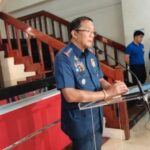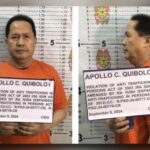BAGUIO CITY – The Diocese of Bangued in Abra has urged government officials to act against a mining company allegedly operating in Licuan-Baay town without the consent of indigenous peoples.
In a statement, the diocese, covering all Catholic churches in the 27 municipalities of Abra, said Yamang Mineral Corporation obtained an Authority to Verify Minerals without securing the Free, Prior, and Informed Consent (FPIC) of affected communities.
“This is a violation not only of due process but also of their fundamental rights and dignity. Such disregard for law and community raises deep concern about credibility, respect and justice,” the statement said.
The diocese warned that mining activities in Licuan-Baay could contaminate the Malanas and Baay rivers, which flow into the Abra River.
“We raise our voice on the pressing issue that endangers both the beauty of our land and the well-being of our people, the threat of large-scale mining in Licuan Baay,” it said.
“The threat is not limited to Licuan-Baay… What harms one part of Abra, harms us all.”
Citing the Supreme Court’s doctrine on intergenerational responsibility, the diocese stressed that “every generation has a responsibility to the next to preserve the rhythm and harmony of the environment.”
It added that the Church stands united in defending the environment and called on residents to “choose life, justice, and stewardship” in opposing large-scale mining in the province.
Diocese of Bangued
The Diocese of Bangued is a Roman Catholic diocese in the Philippines, established in 1955 and serving the province of Abra on the island of Luzon. Its seat is the St. James the Elder Cathedral in Bangued, which was originally built as a parish church by Augustinian missionaries in the early 18th century.
Abra
Based on the most common interpretation, this likely refers to the province in the Philippines.
Abra is a landlocked province in the northern Philippines, within the Cordillera Administrative Region. Its history is deeply tied to the indigenous Tingguian people, and it was established as a political-military province by the Spanish in the 19th century to facilitate control over the local tribes. The area is known for its rugged, mountainous terrain and rich cultural traditions.
Licuan-Baay
Licuan-Baay is a municipality located in the landlocked province of Abra in the northern Philippines. It is a culturally significant area for the indigenous Tingguian people and is known for its rugged, mountainous terrain and natural attractions like the Apao Rolling Hills.
Baay River
I am not familiar with a significant cultural or historical site specifically named the “Baay River.” It is possible you are referring to a local geographical feature whose history is not widely documented in mainstream sources. For a more accurate summary, could you please provide additional context, such as its location or any alternate spellings?
Abra River
The Abra River is a major river system in the northern Philippines, flowing through the Cordillera mountains in Luzon. Historically, its fertile valley was a significant settlement area for indigenous communities and later became a vital transport and trade route during the Spanish colonial era. Today, it remains crucial for irrigation, fishing, and as a source of hydroelectric power for the region.
Malanas River
The Malanas River is a significant waterway in the Kullu Valley of Himachal Pradesh, India, renowned for its pristine beauty and its association with the ancient village of Malana. The river flows through a region historically isolated from the outside world, which is home to the Malana people who claim descent from Alexander the Great’s army. Its waters are considered sacred by the local community, whose unique culture and traditions have been preserved for centuries.
Indigenous Peoples’ Rights Act
The Indigenous Peoples’ Rights Act (IPRA) is a landmark 1997 law in the Philippines that recognizes, protects, and promotes the rights of the country’s indigenous cultural communities. It was enacted to rectify historical injustices and secure indigenous land rights, self-governance, and cultural integrity. The law is a comprehensive legal framework that acknowledges the vital role of indigenous peoples in national identity and development.
Supreme Court
The Supreme Court is the highest judicial body in the United States, established in 1789 by Article III of the U.S. Constitution. It is responsible for interpreting the Constitution and has the ultimate authority to overturn laws through judicial review, a power established by the landmark 1803 case *Marbury v. Madison*. Its iconic neoclassical building in Washington, D.C., was completed in 1935.






